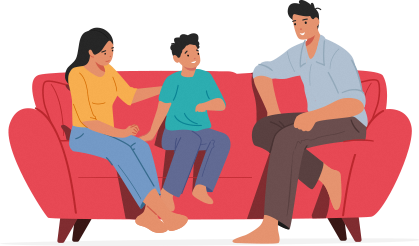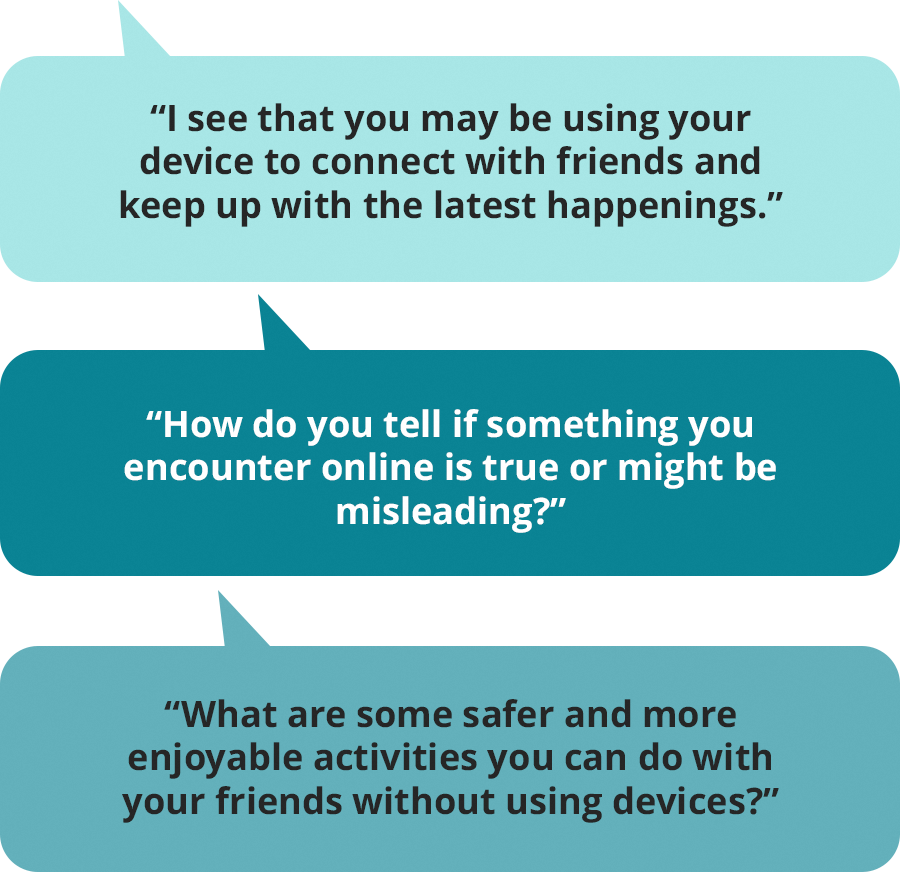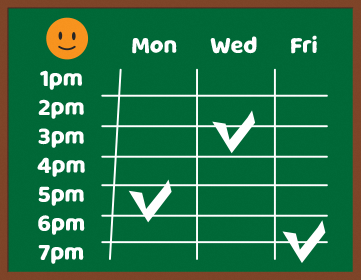Some ways you can do so include:
-
When using your devices, consider whether it interrupts your interactions with your child, as they often mirror your actions
-
Consistently model positive screen use behaviours and habits that you want them to have

-
As a family, commit to device-free times like mealtimes, at least one hour before sleep or when other family members and visitors are present
-
If you need to use your device during these times, explain to your child what you are doing and why there is a need to do so
-
You can consider giving your child a guided tour of your digital devices by showing them what you do on it and sharing about the choices you make
-
You can also invite your child to do the same and show you around their devices
-
Highlight to them that not all screen time is equal as some screen time activities are more essential while others may be unhealthy if done in excess
-
-
Set aside time to engage in screen-free activities as a family, such as going outdoors or playing board games

-
Having open conversations about your child's online activities is important as it makes it easier for you to guide and support them as they navigate the online space and its challenges
-
Discuss your observations on their screen use and ask open-ended questions to allow your child to share their perspectives
-
For example, you can say:
-



-
Provide them with a safe space to share by seeking to understand their intention
-
During the conversation, avoid punishing them immediately
-
Instead, listen to what they have to say and ask follow-up questions
-
Refrain from judging too quickly or giving advice as this may shut them out
-
Ensure your child is aware of the risks of excessive use as well as how to manage them
-
Let them know that while you understand there are benefits to device use, it is still important to be aware of potential dangers
-
For example, you can say:

- Before using parental controls to supervise your child’s online activity, have conversations with them to explain that you are doing so because you care about them and want them to be safe online
-
Create a family screen use plan or timetable collaboratively to help all family members achieve an appropriate balance between screen use and other activities such as family bonding, interaction with peers, homework, work, and exercise
-
As the plan or timetable should be agreed upon by all family members, have open conversations to discuss and communicate both the expectations of screen use and the consequences of breaking these rules clearly


-
Invite your child to add their own rules to increase their ownership of the plan
-
Some examples of rules include:
-
Types of online activity that are allowed or not allowed
-
Device-free times and places
-
Time limits for device use
-
Actions to take when they encounter uncomfortable things online
-
To guide your conversation with your child, you can:
- Ask how they feel about their habits

- Ask for their opinion on rules

- Ask for their opinion on the consequences of rule breaking

For younger children:
While younger children may need more guidance to use devices safely and responsibly, you can still find ways to allow them to have some ownership over it. For example, you can tell them that they have 10 minutes to watch videos but give them a choice between two age-appropriate videos of your selection.


For older children:
Older children, on the other hand, may want to have greater independence over their device use. As such, you can seek their opinion on how much time they would need for their activity.
For example, you can say:

You can make use of this Family Screen Use Contract to set rules around screen use and staying safe online.



